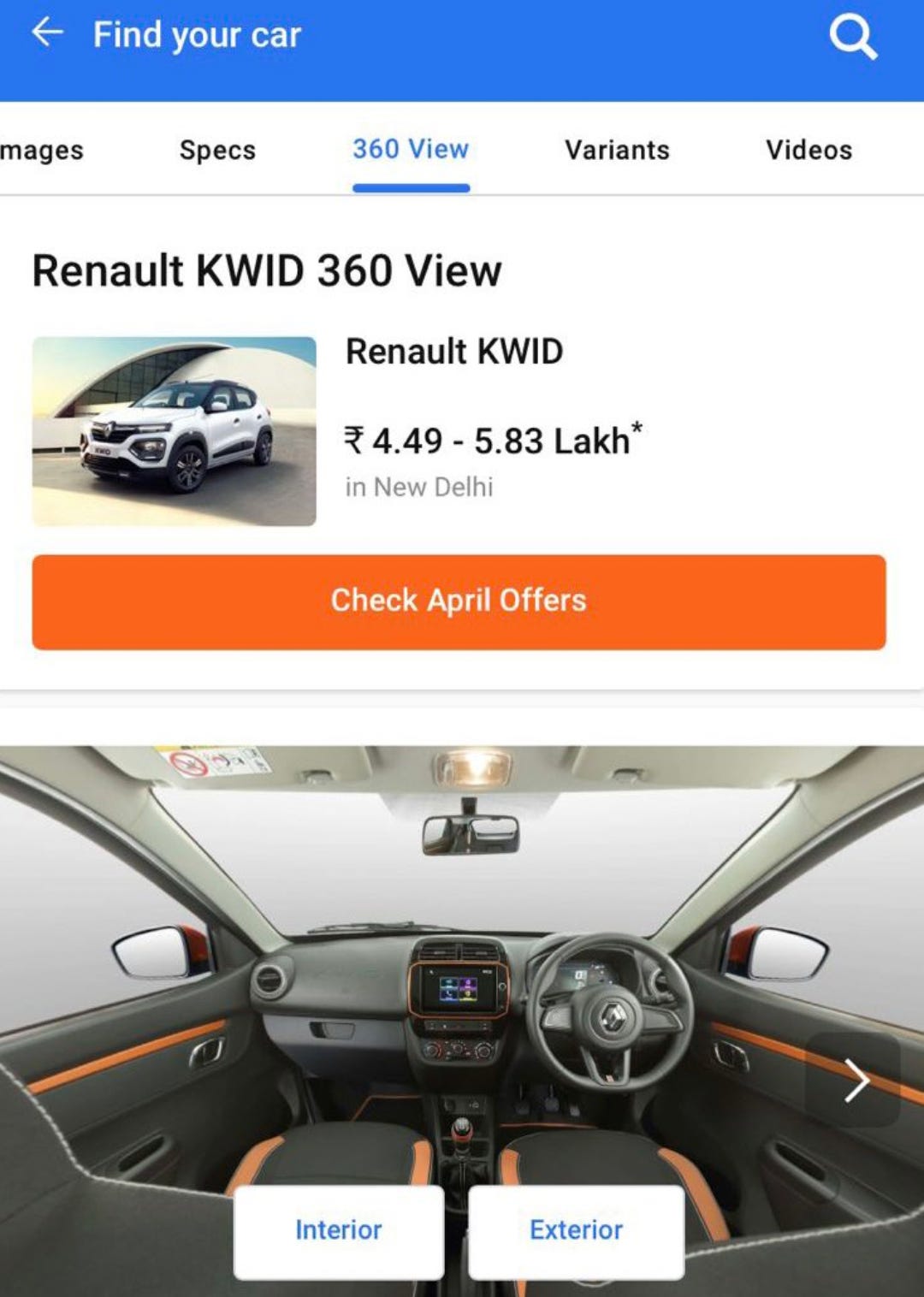How far is AR?
#2 Talking about AR/VR, and its placement in India's e-commerce segment.
For today's 'Understanding Nuances', we bring the second article to our biweekly articles on new perspectives around product features. We talk about AR/ VR, its evolution, its presence in the e-commerce segment in India, and new product and feature developments in this space.
Augmented reality, virtual reality? These flashy, overly marketed bluechip terminologies have started surfacing up on our daily apps and will soon become mainstream to our eyes. Google did a video launch of the glasses prototype they are working on, Google Glasses. Real-time transcription of language? Classic AR!
Virtual reality has already been popping everywhere, thanks to the crypto and web3 blazing popularity. It is not an unknown term now, although it isn't very new either. The first VR experience can be remembered as a man sticking his head entirely in front of a TV screen, XD. A more popular and structural VR experience came from the entertainment industry through Sensorama. Morton Heilig, in 1957, invented the Sensorama, which delivered visuals, sounds, vibration and smell to the viewer. Take a look at his machine!
Similarly, AR was first seen around the same time in military operations. So, technically, AR is not very old, but it is now super accessible. Lower computing costs, enhanced software and hardware configurations, and dirt cheap internet have commoditised AR to the point where companies like Google have made it possible for a software engineer sitting at home to create AR/VR-based applications using Google ARcore.
But commoditisation has still not resulted in usage at scale. There were some inflection points (one big push came from COVID-19). In fact, it was more than a push. AR became a necessary tool for some professional fields. Just take a look at Google search trends for the last five years. COVID-19 onset (March - April - May 2020), and the public went bonkers searching AR keywords.
The trend ultimately died down, but the development continued. Today, we see AR-based shopping experiences made possible by some luxury brands and their software products like DressingRoom by Gap, but again this brand and audience represent a minute fraction of the internet consumer base.
Let's talk about how e-commerce in India uses AR (which will be a good proxy to check the adoption of augmented reality in the daily lives of people).
Augmented reality has started showing up on e-commerce apps. Building an AR-based shopping experience for e-commerce is a super challenging task (again, because of scale). This is validated from the bottom notes by PMs and EMs about how the feature takes time to scale to different product categories and broader coverage of products. Currently, there are some categories where Flipkart has integrated AR views in the PDP pages.
On Amazon, you can try out shades of lipsticks on your photo. I highly doubt if we can call this an AR-based shopping experience. The tech is not even real-time. Although there is something called a 360 degrees view available for some heavy and large appliance categories that help you rotate and view objects from a 360-degree view. Still very far from what we say AR-based shopping experience.
But, Flipkart has an integrated AR view of items for categories like the home, kitchen and other large appliances.
Still, the coverage is low. There are many products in the furniture category where AR view is not available. Flipkart has been quick to develop these views with help from an acquired augmented reality startup arm Scapic. Scapic now works collectively under the vertical (Flipkart has verticalised all its departments, they technically work as a group of different companies under the brand name of Flipkart) called Flipkart Camera. Although Flipkart has a dedicated vertical for cameras, it still does not support image search, which Amazon supports. Flipkart has also partnered with CarDekho, which provides a 360-degree car showrooming experience on the app. Go check it out; it's super cool.
AR/ VR-related updates in the shopping space -
Nothing phone launches exclusively on Flipkart (Yes, you have the AR view of the phone, go check it out)
Flipkart has launched something interesting in the Web3 space as well. Check out their Twitter page - FireDrops by Flipkart.
What happened this week?
Starbucks took those South Bombay/Delhi jokes way too seriously - Starbucks has launched Masala Chai and a new size category called 'Picco' (the smallest portion in the catalogue) for Indian outlets. More about it here.
Have you seen the Hritik Roshan ad in which he orders something from your local restaurant? Zomato has nailed this super personalised ad campaign using deepfake tech. Consider yourself lucky if you have seen one; it creeps you for a moment, like why the hell Hritik Roshan wants to order from some local eatery in your city. More about it here.
Flipkart started selling electric scooters on its app, powered by Bounce (what a pivot!). More about it here.
And with that, we end today's piece on top fortnightly app trends. We also post daily product observations on Twitter. For the newsletter, we will try to bring new perspectives around product features every two weeks straight into your mailbox!






